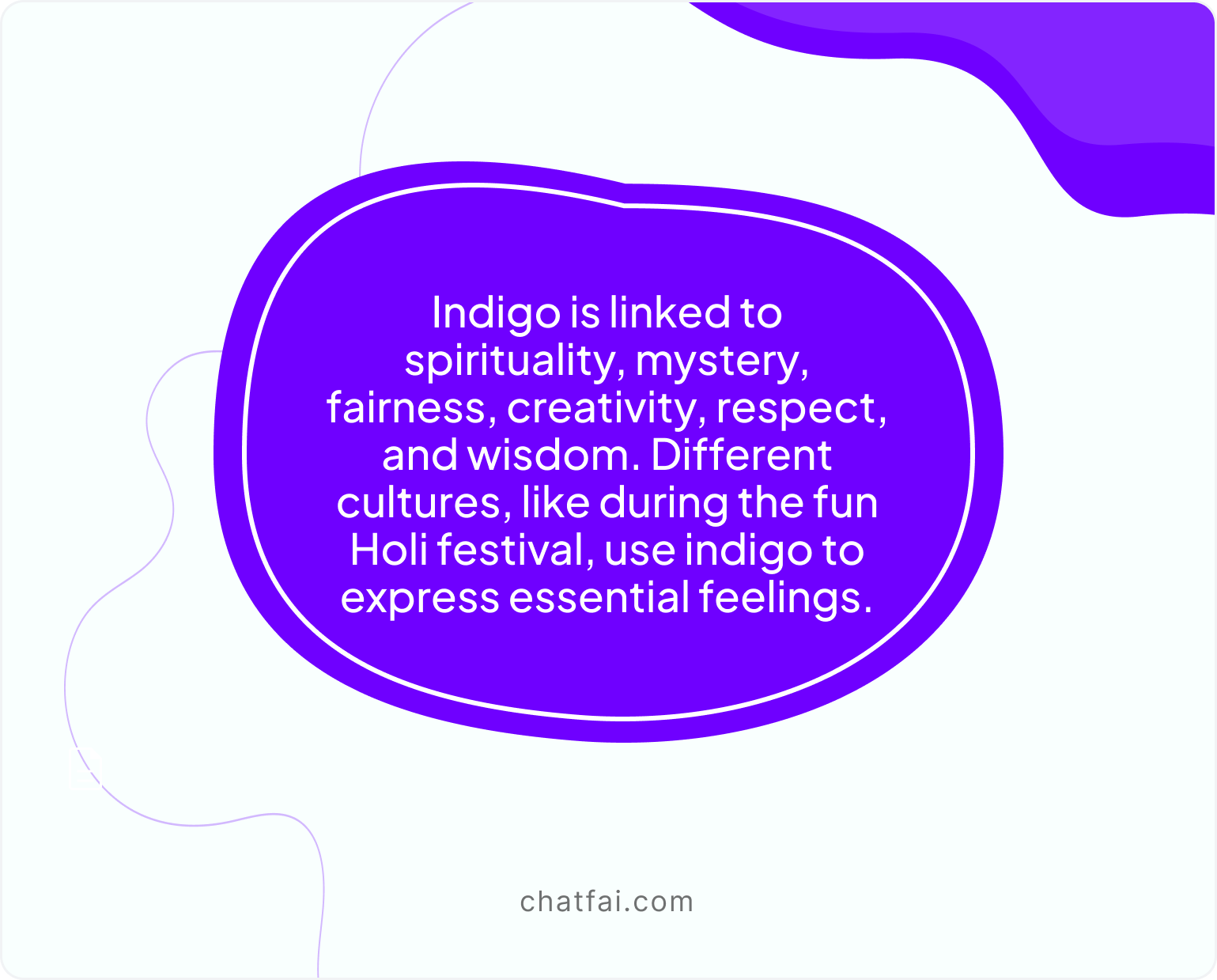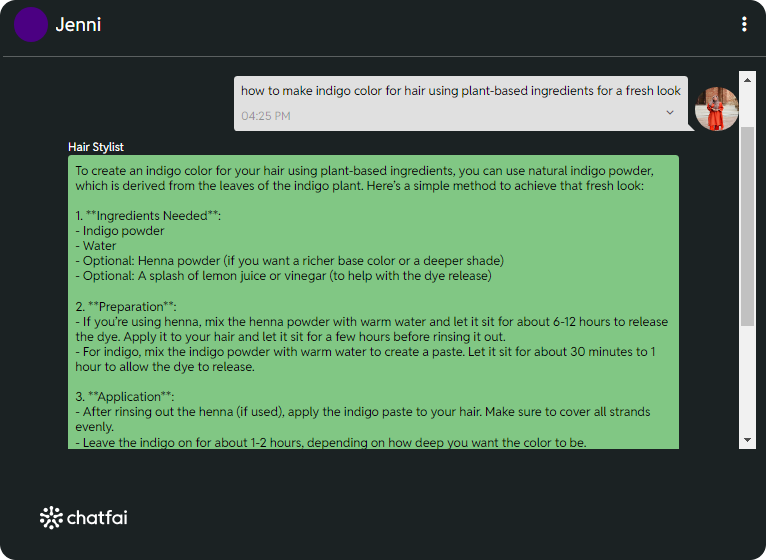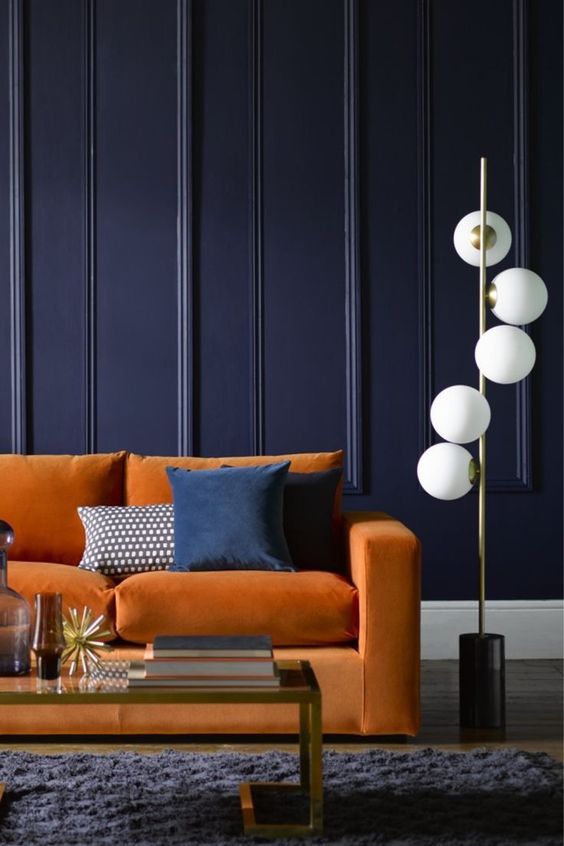Are you confused about which color to use for your painting project? Indigo color can bring your projects to life, whether you’re painting, dyeing fabrics, or coloring your hair.
But finding the answer to how to make Indigo color might be overwhelming.
This guide will show you how to make indigo differently, from mixing paints to using natural plant dyes. If you’re a DIY pro or just starting, you’ll find easy, step-by-step instructions that make it fun. Let’s explore your creativity and create stunning shades of indigo together!
Get to Know About Indigo Color
Indigo color comes from the indigo plant (Indigofera tinctoria) and the woad plant (Isatis tinctoria). These plants have a magical ingredient that, when processed, gives us the beautiful indigo. It’s like getting a unique color directly from nature!

Indigo is linked to spirituality, mystery, fairness, creativity, respect, and wisdom. Different cultures, like during the fun Holi festival, use indigo to express essential feelings.
While navigating the color chart, you can find Indigo between blue and violet. Picture the sky just as it’s getting super dark at night—that’s indigo. The color is among the top favorites of people of all ages for its royal beauty and fancy feel. The color never goes out of style, no matter how you use it.
So, when we talk about understanding indigo, we mean figuring out all the cool things about this particular color that people have loved for ages.
Shades of Indigo color
Indigo is not just one color; it has different shades depending on the quantity of constituents. Scroll down to find various shades of Indigo.

1. Electric Indigo color #6f00ff
Electric Indigo (#6f00ff) is a bright, intense color resembling deep blue and vivid purple. It’s lively and full of energy, making it stand out.
2. Dark Indigo Color #2a0d5d
The Dark Indigo Color #2a0d5d, also called Prussian blue, is part of the deep purple color family.
3. Deep Indigo Color #2b0071
Deep Indigo Color #2b0071, also called deep or royal indigo, is a part of the deep purple color family. It could be more brightly, but it’s colorful and lively.
4. Violet Indigo Color #3e285c
Violet Indigo Color #3e285c combines deep indigo richness with a touch of violet. It could be brighter, but it has vibrant colors.
5. Pigment Indigo Color #4b0082
Pigment Indigo Color #4b0082, also called web color indigo, is a flexible hue for art, suitable for paint or colored pencils. When painting, it looks dull compared to screens, where it seems more like violet.
6. Heather Indigo Color #2d2643
Heather Indigo Color #2d2643 mixes blue and purple, making a lovely overall indigo shade. Match it with purple, violet, or dark blue to highlight different color tones.
7. Indigo Dye Color #00416a
This dark blue shade is the classic indigo dye color, capturing the natural look of indigo. It’s commonly used in dyeing fabrics and art to achieve that timeless indigo look.
That’s all you need to know about the color. Let’s find the answer to how to make Indigo color.
How To Make Indigo Color – Step-by-Step Guide
As an artist, you might have been searching for how to make indigo color by mixing two colors. Well, it sounds overwhelming, but it’s not that difficult. Simply put, mix blue and violet in a ratio of approximately four parts blue to 1 part violet. It will give you an essential indigo shade. Roll your sleeves, as we’re going to make Indigo color.
Here are the materials that you need to get started:
Step 1: Gather Materials
To make Indigo, you need blue and violet. Since blue is a primary color, you can get it without effort. However, you first have to prepare violet to get started.
How to Make Violet Color
Mix red and blue in equal quantities to make violet and stir well. Depending on the amount of primary colors used, you’ll get different shades of violet.
Now that you know how to make Violet color, gather the other stuff for DIY. You must have the following things around you:
- Blue and Violet Colors
- Palette
- Brushes
- Mixing Surface
- Measuring Tools
- Water
- Paper or Testing Surface
- A notebook or phone to record recipe
Now that you’ve got all the materials follow this guide to make the color.
Step 2: Begin with Blue
Put mostly blue pigment on the mixing surface as your primary indigo color. Use a vibrant blue that looks like indigo. This blue sets the stage for creating that unique indigo.
Step 3: Introduce Violet
Add a bit of violet pigment to the blue. Be careful while adding Violet, as it’s the secondary color. Violet adds richness to the blue, turning it into a unique indigo shade. Stir the mix gently to blend the blue and violet.
Step 4: Blend with Care
Use a brush to blend the blue and violet pigments gently, aiming for a smooth and even mix. Take your time and be gentle to avoid streaks or uneven spots. The aim is to combine the colors so well that they become one smooth indigo color.
It is how the color is made!
Step 5: Check the Color
After blending, take a moment to look at the color you’ve got. See if it matches the indigo you want or if you need to adjust it. Add more blue or violet pigment, depending on your taste, to get the perfect indigo tone.
Step 6: Amend and Try Again
If the color needs to be corrected, don’t worry. Adjust the amounts of blue and vivid violet pigments. Add small pigment bits until you get the indigo shade you love.
Remember, getting the perfect color might take a few tries and adjustments.
Create abstract art using the SocialBu image generator.
Creative Ways of Using Indigo Color
Indigo is a beautiful, deep blue that can add a cool touch to your projects. Here are some fun ideas for using indigo in your life:
Paints
Mix up some indigo paint to add a bold splash of color to your canvas. Learn how to create these colors using different paints for your next masterpiece.
Hair Dye
Ready for a change? Indigo makes a fantastic natural hair dye. It gives you a vibrant color without the harsh chemicals.
Check out how to make indigo color for hair using plant-based ingredients for a fresh look on ChatFAI.

Have some questions to ask? Head to ChatFAI to get personalized assistance from an AI hairstylist.
Wall Painting
Give your room a makeover with indigo wall paint! This striking color can create a calm vibe or a bold statement. Use this color for your next wall painting project and see how it transforms your space.
Fashion
Indigo is a classic in fashion, especially in denim and tie-dye. Use this stunning color to create your indigo-dyed clothes or accessories. Stand out with unique pieces that show off your style!
Home Decor
Add some indigo to your home decor with cushions, curtains, or rugs. This rich color looks great with almost anything and can give your space a fresh, modern feel. Use exact accents to make your home more inviting.

Wrap Up
Here, we come to the end of the discussion about how to make Indigo. To prepare the color, mix red and blue carefully. You can vary the proportion of both colors to get different shades of Indigo. However, the key is to keep the blue color slightly higher, or else you’ll get shades of purple.
To know how to make Indigo color, get help from experts on ChatFAI to make your DIY successful.
FAQs
What Colors Make Up Indigo?
Blue and red makeup Indigo. However, the proportion of blue should be a little higher to make perfect violet. Mixing red and blue in equal proportion will make purple.
Is Indigo a Blue or a Purple?
Indigo is neither blue nor purple; it’s a mixture of blue and red, with blue accounting for two-thirds of the color.
How do You Create Indigo?
To create indigo, mix the blue and red in a two-thirds to one-third ratio. Mix both colors until you get the perfect shade of Indigo.
What Color Is Closest to Indigo?
According to the color wheel, Indigo is between blue and purple. However, it is closest to blue.
How to Make Indigo Color With Watercolors?
To make an Indigo with watercolors, mix red and blue to create a violet color, then add more blue while stirring.
How to Make Indigo Color with Acrylic Paint?
Just like you learned how to make Indigo colors with watercolors, it’s simple to make Indigo with acrylic paint. It’s just about the proportion of colors you mixed. No matter which paint and colors you’re using, making indigo is the same.